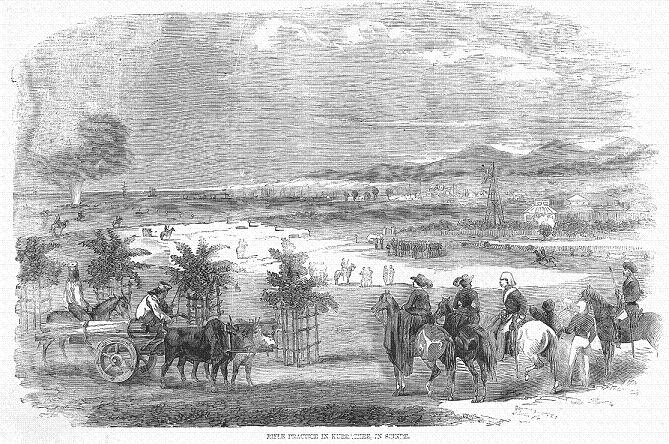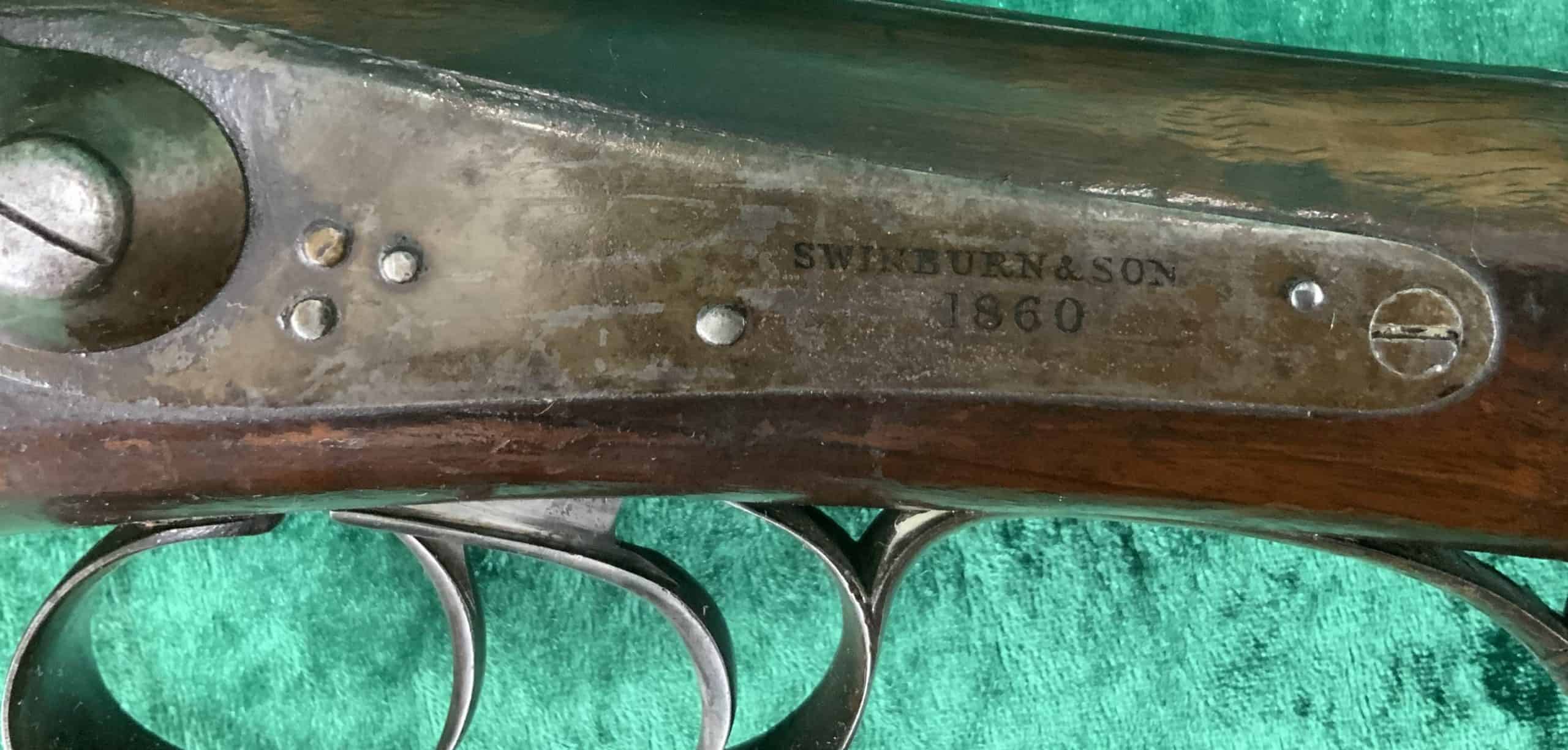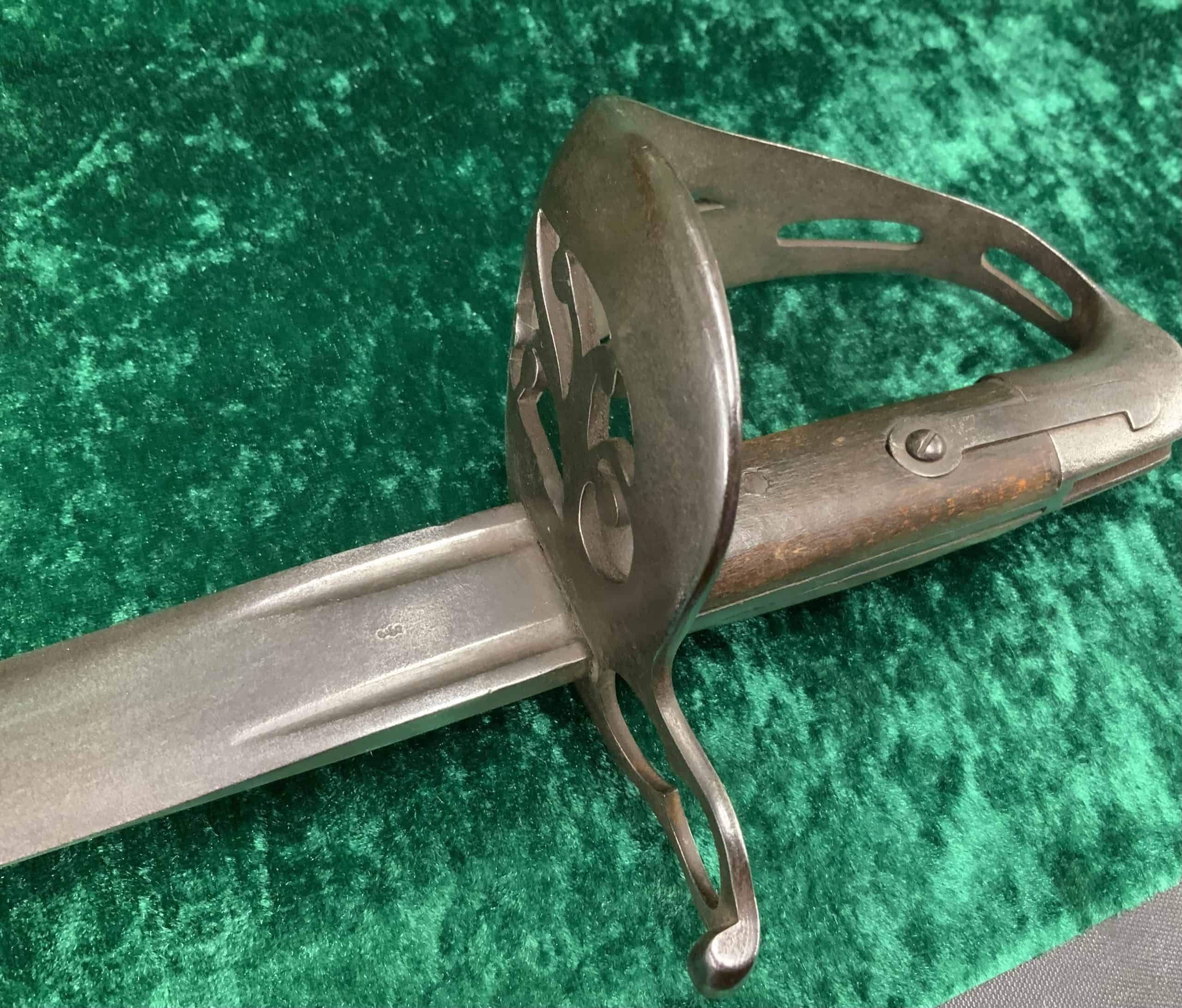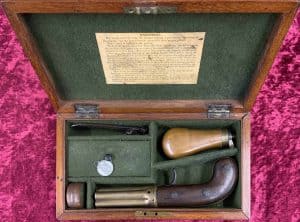Description
Jacobs Rifle & Bayonet
Jacobs Rifle & Bayonet. VERY RARE, Un-Altered, 1860 Dated, 32 Bore, Jacob Double Rifle By Swinburn & Co To The Indian Jacob’s Rifles Battalion. Including rare bayonet. This rifle is in superb original condition with excellent bores. The unusual sword bayonet with a 30-inch-long blade is patterned after the Scottish basket-hilt broadsword. The bayonet whilst in good original condition does have some minor pitting to the blade and has a slight bow along its length.
Designed and developed by General John Jacob, British Army, whom was commander of the Scinde Irregular Cavalry. The Jacobs Rifle became known for accuracy at long distance. Approximately 900 were issued to officers and men. After General Jacobs death in 1858, many of the rifles were returned to military storage and later sold on the commercial market.
Jacob was born in 1812, the son of a Somerset vicar. At age 14 he enrolled in the Honourable East India Company’s academy at Addiscombe, and graduated some two years later with a second lieutenancy in the Bombay Artillery.
During the First Afghan War (1839-42) he was attached to the Scinde Irregular Horse, where his natural leadership and easy manner with the native troopers under his command drew the attention of the authorities. In late 1841 he was offered the command of the regiment, which he accepted gladfully.
The Scinde Irregular Horse was a sillidar regiment. This meant the native Indian cavalrymen (sowars) received more pay then their counterparts in the regulars, but they were required to supply and maintain their own equipment and horses. The East India Company provided only firearms and ammunition. Everything else, including fodder, rations and medical care were the responsibility of the troopers.
His regiment figured heavily in the conquest of the Scinde in 1843, and was constantly involved in skirmishes with border tribesmen. Jacob’s star ascended and his renown spread throughout Northern India. He greatly improved the living conditions of the people in the area in which he was stationed, and because of this, the town of Khangur was officially renamed Jacobabad in his honor in 1851.
In the early 1850s Jacob took it on his own to prescribe the firearms carried by the Scinde Irregular Horse, influencing the adoption a double-barreled carbine and pistol that were manufactured by Swinburn & Son, beginning Jacob’s relationship with the company that was to figure prominently in some of his later endeavors.
Apparently experimental versions of the rifle were manufactured for Jacob by George H. Daw, who (among others) later advertised sporting models of the piece. A writer of the period described shooting a gun made on this pattern:
“The recoil is by no means pleasant.[Jacob recommended a powder charge of some 2 ½ drams—68 grains of gunpowder!] The gauge is 32. This rifle does not seem to have any advantages at sporting ranges; but for military purposes it has been strongly recommended. Especially in reference to the explosive shells which are used with it….the shells…require a short stout barrel, and cannot be used with a long thin one, like the Enfield [still, Enfield-style rifles were actually manufactured with Jacob rifling, and seemed relatively popular]. For killing large animals, like the elephant of rhinoceros, they are particularly qualified; and I should strongly recommend elephant hunters to examine the merits of this rifle…”
Around the time of these experiments, Sir Joseph Whitworth’s hexagonally-bored rifle, firing elongated “smallbore” .451 “bolts,” was receiving considerable attention as a long-range target gun. Granted, Jacob never expected his short-barreled double to have pinpoint accuracy, however now even his claims of superior range were being challenged.
At this point the history of the Jacob rifle becomes hazy. Jacob died of “exhaustion” on December 5, 1858, but apparently not before he was able to place an order with Swinburn & Son of London, for the requisite number of guns.

Click here for more Antique Arms










